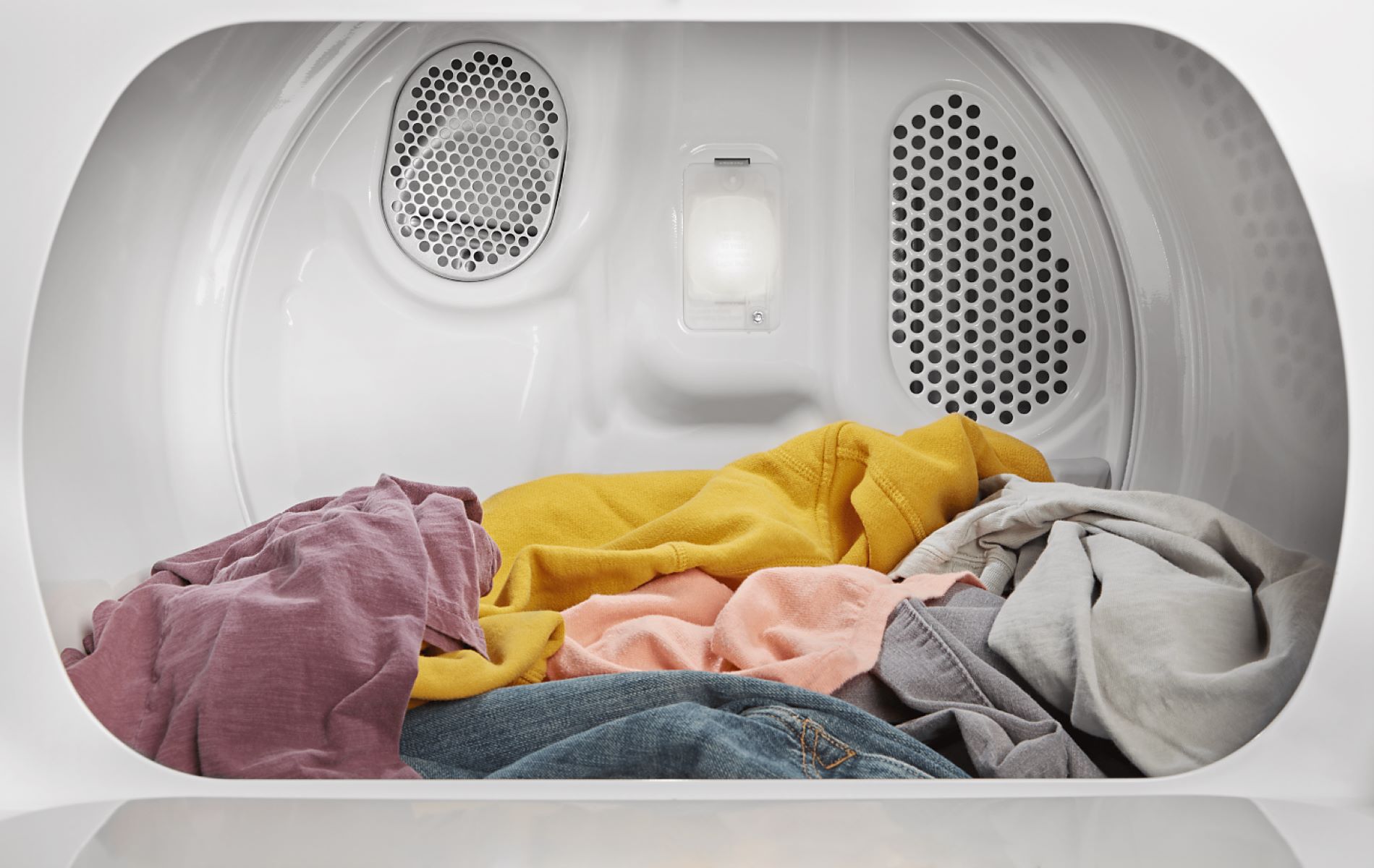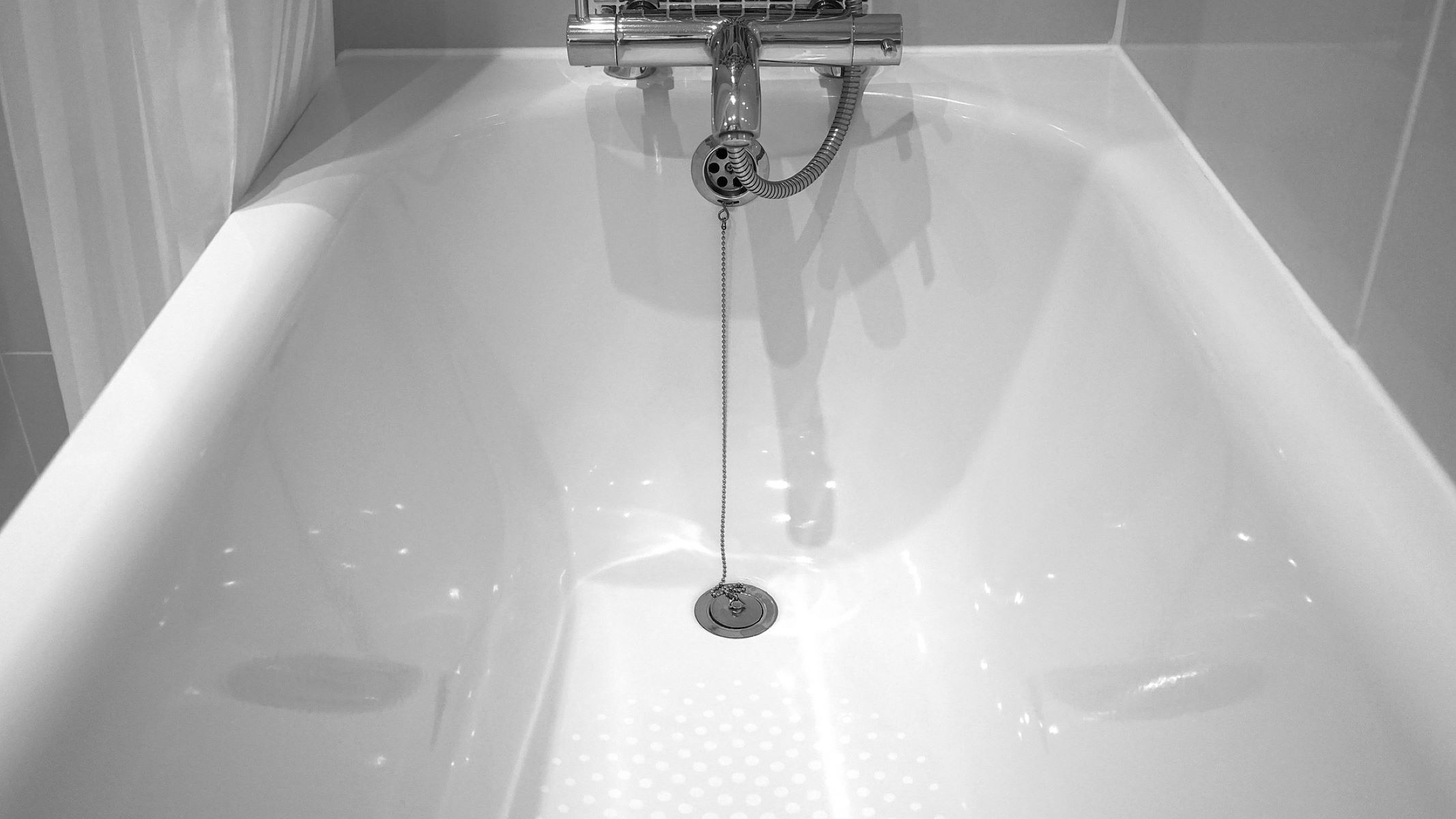Home>Home and Garden>Possible Causes And Solutions For A Whirlpool Clothes Dryer Not Heating Up


Home and Garden
Possible Causes And Solutions For A Whirlpool Clothes Dryer Not Heating Up
Published: February 19, 2024
Discover the possible causes and solutions for a Whirlpool clothes dryer not heating up. Get expert tips and advice for troubleshooting this common home and garden appliance issue.
(Many of the links in this article redirect to a specific reviewed product. Your purchase of these products through affiliate links helps to generate commission for Regretless.com, at no extra cost. Learn more)
Table of Contents
- Introduction
- Possible Causes for a Whirlpool Clothes Dryer Not Heating Up
- Faulty Heating Element
- Blocked Ventilation
- Malfunctioning Thermostat
- Broken Thermal Fuse
- Defective Igniter or Gas Valve
- Solutions for a Whirlpool Clothes Dryer Not Heating Up
- Replace the Heating Element
- Clean the Ventilation System
- Check and Replace the Thermostat
- Replace the Thermal Fuse
- Repair or Replace the Igniter or Gas Valve
- Conclusion
Introduction
A Whirlpool clothes dryer not heating up can be a frustrating and inconvenient issue, disrupting the seamless flow of your laundry routine. When the dryer fails to generate sufficient heat, it can lead to damp, unwearable clothes and prolonged drying times. Understanding the potential causes behind this problem is crucial for effective troubleshooting and resolution.
In this comprehensive guide, we will delve into the common reasons why a Whirlpool clothes dryer may fail to produce heat, along with practical solutions to address each issue. By gaining insight into these potential culprits and their respective remedies, you can restore your dryer's functionality and efficiency, ensuring that your laundry is dried thoroughly and promptly.
Let's explore the possible causes and solutions for a Whirlpool clothes dryer not heating up, empowering you to tackle this inconvenience with confidence and expertise.
Possible Causes for a Whirlpool Clothes Dryer Not Heating Up
-
Faulty Heating Element: The heating element is a vital component responsible for generating the heat required to dry your clothes. Over time, this element can deteriorate or become damaged, leading to a lack of heat production. If the heating element is faulty, the dryer will run but fail to warm up, resulting in damp laundry even after a full drying cycle.
-
Blocked Ventilation: Proper airflow is essential for efficient drying. If the dryer's ventilation system is obstructed by lint, debris, or other obstructions, it can impede the heat distribution within the appliance. A clogged ventilation system restricts the airflow, causing the dryer to struggle in reaching and maintaining the necessary temperature for effective drying.
-
Malfunctioning Thermostat: The thermostat regulates the temperature inside the dryer. When the thermostat malfunctions, it can inaccurately signal the heating element to shut off prematurely or fail to activate it at all. As a result, the dryer may exhibit inadequate or no heating, leading to damp clothes and prolonged drying cycles.
-
Broken Thermal Fuse: The thermal fuse acts as a safety mechanism to prevent the dryer from overheating. However, if the thermal fuse is blown due to an electrical surge or other issues, it can disrupt the heating process, rendering the dryer unable to produce heat. A malfunctioning thermal fuse can result in a non-heating dryer, indicating the need for a replacement.
-
Defective Igniter or Gas Valve: In gas-powered dryers, a defective igniter or gas valve can be the root cause of the heating failure. The igniter is responsible for initiating the gas combustion process, while the gas valve controls the flow of gas to the burner assembly. If either of these components is faulty, the dryer will struggle to ignite the gas, leading to a lack of heat production.
Understanding these potential causes for a Whirlpool clothes dryer not heating up is the first step toward resolving this issue effectively. By identifying the specific culprit behind the heating failure, you can proceed to implement targeted solutions, ensuring the restoration of your dryer's optimal functionality.
Faulty Heating Element
The heating element in a Whirlpool clothes dryer plays a pivotal role in generating the necessary heat to facilitate the drying process. Over time, this component may succumb to wear and tear, leading to a range of issues that result in a lack of heat production. When the heating element is faulty, the dryer may exhibit symptoms such as running without generating heat, leaving the laundry damp and requiring extended drying cycles.
The deterioration of the heating element can stem from various factors, including prolonged usage, power surges, or simply the natural degradation of the component over time. As the heating element degrades, it may develop visible signs of damage, such as corrosion, breakage, or disconnection. Additionally, a faulty heating element can also result from an electrical malfunction within the dryer's internal wiring or connections.
When confronted with a faulty heating element, it is crucial to address this issue promptly to restore the dryer's functionality and efficiency. Replacing the heating element is often the most effective solution, ensuring that the appliance can once again generate the required heat to dry your laundry thoroughly and promptly. By consulting the dryer's user manual or seeking professional assistance, you can identify the compatible replacement heating element and proceed with the installation process.
Upon replacing the faulty heating element, it is advisable to conduct a thorough inspection of the dryer's internal components to ensure that no other issues contribute to the heating failure. Additionally, implementing regular maintenance practices, such as cleaning the lint trap and ventilation system, can contribute to the prolonged functionality of the new heating element and the overall efficiency of the dryer.
By addressing the issue of a faulty heating element in a Whirlpool clothes dryer with diligence and expertise, you can effectively resolve the heating failure and restore the appliance to optimal working condition. This proactive approach ensures that your laundry drying process remains seamless and efficient, allowing you to enjoy consistently dry and fresh-smelling clothes without the inconvenience of prolonged drying times or damp garments.
Blocked Ventilation
Proper airflow is essential for the efficient operation of a Whirlpool clothes dryer. When the ventilation system becomes obstructed, whether due to accumulated lint, debris, or external blockages, it significantly hinders the appliance's ability to distribute heat effectively. As a result, the dryer may struggle to reach and maintain the necessary temperature for thorough and timely drying, leading to damp or partially dried laundry.
A blocked ventilation system can manifest in various ways, impacting the dryer's performance and the condition of the laundry. One common indication of this issue is the dryer running for extended periods without adequately drying the clothes. Additionally, the exterior of the dryer and the surrounding area may become excessively hot during operation, signaling a restricted airflow that prevents the dissipation of heat.
To address a blocked ventilation system, it is essential to conduct a comprehensive inspection of the dryer's ducts, vents, and exhaust pathways. Begin by disconnecting the dryer from the power source and carefully moving it away from the wall to access the rear panel. Inspect the venting system for any visible obstructions, such as lint buildup or foreign objects that may impede the airflow.
Next, detach the venting duct from both the dryer and the exterior vent opening to facilitate a thorough cleaning process. Utilize a vacuum with a narrow attachment or a specialized vent cleaning brush to remove accumulated lint and debris from the ducts. Pay close attention to the vent opening, ensuring that it is free from any blockages that may hinder the expulsion of moist air from the dryer.
In addition to clearing the venting system, it is advisable to clean the lint trap and filter within the dryer itself. A clogged lint trap can exacerbate ventilation issues, leading to reduced airflow and heat dissipation. Regularly removing lint from the trap after each drying cycle can help prevent blockages and maintain optimal airflow within the appliance.
Once the ventilation system is thoroughly cleaned and free from obstructions, reconnect the venting duct and ensure a secure and airtight attachment to prevent air leaks. Position the dryer back in its original location, taking care to leave sufficient space behind the appliance to prevent the kinking or crushing of the venting duct.
By addressing a blocked ventilation system in a Whirlpool clothes dryer with meticulous attention to detail, you can effectively restore the appliance's airflow and heat distribution capabilities. This proactive approach not only resolves the immediate issue of inadequate drying but also contributes to the prolonged functionality and efficiency of the dryer, ensuring consistently optimal performance with each laundry cycle.
Malfunctioning Thermostat
The thermostat in a Whirlpool clothes dryer serves as a crucial component responsible for regulating the internal temperature during the drying process. When the thermostat malfunctions, it can disrupt the heat control mechanism, leading to inadequate or absent heat production within the appliance. This malfunction manifests as the dryer running without generating sufficient heat, resulting in damp or partially dried laundry despite the completion of a full drying cycle.
The malfunctioning of the thermostat can stem from various factors, including prolonged usage, electrical irregularities, or internal component degradation. Over time, the thermostat may become less responsive or fail to accurately gauge and maintain the required temperature, leading to heating inconsistencies and inefficiencies. Additionally, external factors such as excessive lint accumulation or airflow restrictions can impact the thermostat's functionality, exacerbating the heating failure.
To address a malfunctioning thermostat, a systematic approach to diagnosis and resolution is essential. Begin by disconnecting the dryer from the power source and accessing the internal thermostat components. Depending on the model of the Whirlpool dryer, the thermostat may be located near the heating element or within the control panel. Refer to the user manual or seek professional guidance to identify the precise location of the thermostat.
Once the thermostat is accessible, conduct a visual inspection to identify any signs of damage, corrosion, or irregularities. Additionally, utilize a multimeter to test the thermostat's continuity and resistance, determining whether it accurately responds to temperature changes. If the thermostat exhibits irregular readings or fails to maintain the appropriate resistance levels, it indicates a malfunction that requires attention.
Replacing the malfunctioning thermostat is often the most effective solution to restore the dryer's heat control capabilities. Consult the dryer's user manual or seek professional assistance to identify the compatible replacement thermostat for your specific model. Carefully follow the installation instructions, ensuring that the new thermostat is securely positioned and calibrated to accurately regulate the dryer's internal temperature.
Upon replacing the thermostat, it is advisable to conduct a comprehensive inspection of the dryer's internal wiring and connections to identify and address any potential electrical irregularities. Additionally, implementing regular maintenance practices, such as cleaning the ventilation system and conducting periodic thermostat checks, can contribute to the prolonged functionality of the new thermostat and the overall efficiency of the dryer.
By addressing the issue of a malfunctioning thermostat in a Whirlpool clothes dryer with precision and expertise, you can effectively resolve the heating failure and restore the appliance to optimal working condition. This proactive approach ensures that your laundry drying process remains seamless and efficient, allowing you to enjoy consistently dry and fresh-smelling clothes without the inconvenience of prolonged drying times or damp garments.
Broken Thermal Fuse
The thermal fuse in a Whirlpool clothes dryer serves as a critical safety component designed to prevent the appliance from overheating. When the internal temperature of the dryer exceeds the predetermined threshold, the thermal fuse effectively interrupts the electrical circuit, halting the heating process and mitigating the risk of fire or other hazards. However, if the thermal fuse becomes broken or blown due to electrical surges, component degradation, or other factors, it can lead to a complete cessation of heat production within the dryer.
Identifying the symptoms of a broken thermal fuse is essential for effective troubleshooting. When the thermal fuse fails, the dryer will exhibit a complete absence of heat during operation, regardless of the selected settings or cycle duration. Additionally, the appliance may fail to start altogether, signaling a disruption in the electrical continuity caused by the broken thermal fuse.
To address a broken thermal fuse, a systematic approach to diagnosis and resolution is crucial. Begin by disconnecting the dryer from the power source and accessing the thermal fuse, typically located near the heating element or exhaust duct. Refer to the user manual or seek professional guidance to identify the precise location of the thermal fuse within your specific Whirlpool dryer model.
Upon locating the thermal fuse, conduct a visual inspection to identify any visible signs of damage, such as a ruptured or discolored casing. Additionally, utilize a multimeter to test the thermal fuse's continuity, determining whether it effectively maintains the electrical circuit or if it has become non-functional due to a blown fuse element.
Replacing the broken thermal fuse is the primary solution to restore the dryer's heat generation capabilities. Consult the dryer's user manual or seek professional assistance to identify the compatible replacement thermal fuse for your specific model. Carefully follow the installation instructions, ensuring that the new thermal fuse is securely positioned and capable of effectively regulating the appliance's internal temperature.
After replacing the thermal fuse, it is advisable to conduct a comprehensive inspection of the dryer's ventilation system and heating element to ensure that no additional issues contribute to the heating failure. Additionally, implementing regular maintenance practices, such as clearing the lint trap and exhaust duct, can contribute to the prolonged functionality of the new thermal fuse and the overall efficiency of the dryer.
By addressing the issue of a broken thermal fuse in a Whirlpool clothes dryer with precision and expertise, you can effectively resolve the heating failure and restore the appliance to optimal working condition. This proactive approach ensures that your laundry drying process remains seamless and efficient, allowing you to enjoy consistently dry and fresh-smelling clothes without the inconvenience of prolonged drying times or damp garments.
Defective Igniter or Gas Valve
In gas-powered Whirlpool clothes dryers, the igniter and gas valve play integral roles in initiating and regulating the combustion process that generates the necessary heat for drying laundry. When either of these components becomes defective, it can result in a complete cessation of heat production within the dryer, leading to damp or partially dried clothes despite the completion of a full drying cycle.
The igniter serves as the ignition source for the gas burner assembly, initiating the combustion process that produces the heat required for drying. If the igniter fails to function properly, the gas burner will not ignite, leading to a lack of heat within the dryer. This malfunction can manifest as the dryer running without generating any heat, accompanied by the absence of the characteristic clicking sound signaling the ignition of the gas.
Similarly, the gas valve controls the flow of gas to the burner assembly, regulating the heat output based on the dryer's settings and requirements. A defective gas valve can disrupt the gas flow, leading to an inability to sustain the combustion process and generate the necessary heat. This issue may result in the dryer running without producing heat or exhibiting inconsistent heating patterns, leading to inadequate drying performance.
To address a defective igniter or gas valve, a systematic approach to diagnosis and resolution is essential. Begin by disconnecting the dryer from the gas supply and power source to ensure safety during the inspection and repair process. Access the igniter and gas valve components, typically located near the burner assembly or within the dryer's internal structure.
Conduct a visual inspection of the igniter and gas valve to identify any visible signs of damage, corrosion, or irregularities. Additionally, utilize a multimeter to test the continuity and functionality of these components, determining whether they effectively initiate the combustion process and regulate the gas flow. If either the igniter or gas valve exhibits irregular readings or fails to function as intended, it indicates a malfunction that requires attention.
Replacing the defective igniter or gas valve is often the most effective solution to restore the dryer's heat generation capabilities. Consult the dryer's user manual or seek professional assistance to identify the compatible replacement components for your specific model. Carefully follow the installation instructions, ensuring that the new igniter or gas valve is securely positioned and calibrated to initiate the combustion process and regulate the gas flow accurately.
Upon replacing the defective igniter or gas valve, it is advisable to conduct a comprehensive inspection of the gas supply line and burner assembly to ensure that no additional issues contribute to the heating failure. Additionally, implementing regular maintenance practices, such as cleaning the burner assembly and ensuring proper gas line connections, can contribute to the prolonged functionality of the new components and the overall efficiency of the dryer.
By addressing the issue of a defective igniter or gas valve in a Whirlpool clothes dryer with precision and expertise, you can effectively resolve the heating failure and restore the appliance to optimal working condition. This proactive approach ensures that your laundry drying process remains seamless and efficient, allowing you to enjoy consistently dry and fresh-smelling clothes without the inconvenience of prolonged drying times or damp garments.
Solutions for a Whirlpool Clothes Dryer Not Heating Up
Addressing a Whirlpool clothes dryer that fails to produce heat requires a systematic approach to troubleshooting and implementing targeted solutions. By understanding the potential causes behind the heating failure, you can proceed to apply the following practical remedies to restore the appliance's optimal functionality.
1. Replace the Heating Element
When confronted with a faulty heating element, the most effective solution is to replace the component with a compatible and high-quality alternative. Begin by consulting the dryer's user manual or seeking professional assistance to identify the precise replacement heating element for your specific model. Carefully follow the installation instructions, ensuring that the new heating element is securely positioned and capable of generating the necessary heat to facilitate thorough and efficient drying.
2. Clean the Ventilation System
To address a blocked ventilation system, conduct a comprehensive inspection of the dryer's ducts, vents, and exhaust pathways. Utilize a vacuum with a narrow attachment or a specialized vent cleaning brush to remove accumulated lint and debris from the ducts. Additionally, clean the lint trap and filter within the dryer itself to prevent blockages and maintain optimal airflow. Reconnect the venting duct and ensure a secure and airtight attachment to facilitate unrestricted airflow and heat dissipation.
3. Check and Replace the Thermostat
If the thermostat is identified as the culprit behind the heating failure, replace the malfunctioning component with a compatible and reliable alternative. Conduct a thorough inspection of the internal thermostat components, utilizing a multimeter to test the thermostat's continuity and resistance. Upon replacing the thermostat, conduct a comprehensive inspection of the dryer's internal wiring and connections to ensure optimal functionality.
4. Replace the Thermal Fuse
To address a broken thermal fuse, carefully replace the component with a compatible alternative that effectively regulates the dryer's internal temperature. Conduct a visual inspection of the thermal fuse and utilize a multimeter to test its continuity, determining whether it effectively maintains the electrical circuit. After replacing the thermal fuse, conduct a thorough inspection of the dryer's ventilation system and heating element to ensure comprehensive resolution of the heating failure.
5. Repair or Replace the Igniter or Gas Valve
For gas-powered dryers, addressing a defective igniter or gas valve involves replacing the malfunctioning components with compatible alternatives. Conduct a visual inspection and utilize a multimeter to test the continuity and functionality of the igniter and gas valve. Upon replacing these components, conduct a comprehensive inspection of the gas supply line and burner assembly to ensure optimal functionality and heat generation.
By implementing these targeted solutions, you can effectively address a Whirlpool clothes dryer not heating up, restoring the appliance to optimal working condition and ensuring consistently efficient and thorough drying performance.
Replace the Heating Element
The heating element in a Whirlpool clothes dryer is a fundamental component responsible for generating the heat necessary to facilitate the drying process. Over time, this critical element may succumb to wear and tear, leading to a range of issues that result in a lack of heat production. When the heating element is faulty, the dryer may exhibit symptoms such as running without generating heat, leaving the laundry damp and requiring extended drying cycles.
The deterioration of the heating element can stem from various factors, including prolonged usage, power surges, or simply the natural degradation of the component over time. As the heating element degrades, it may develop visible signs of damage, such as corrosion, breakage, or disconnection. Additionally, a faulty heating element can also result from an electrical malfunction within the dryer's internal wiring or connections.
When confronted with a faulty heating element, it is crucial to address this issue promptly to restore the dryer's functionality and efficiency. Replacing the heating element is often the most effective solution, ensuring that the appliance can once again generate the required heat to dry your laundry thoroughly and promptly. By consulting the dryer's user manual or seeking professional assistance, you can identify the compatible replacement heating element and proceed with the installation process.
Upon replacing the faulty heating element, it is advisable to conduct a thorough inspection of the dryer's internal components to ensure that no other issues contribute to the heating failure. Additionally, implementing regular maintenance practices, such as cleaning the lint trap and ventilation system, can contribute to the prolonged functionality of the new heating element and the overall efficiency of the dryer.
By addressing the issue of a faulty heating element in a Whirlpool clothes dryer with diligence and expertise, you can effectively resolve the heating failure and restore the appliance to optimal working condition. This proactive approach ensures that your laundry drying process remains seamless and efficient, allowing you to enjoy consistently dry and fresh-smelling clothes without the inconvenience of prolonged drying times or damp garments.
Clean the Ventilation System
Proper airflow is essential for the efficient operation of a Whirlpool clothes dryer. When the ventilation system becomes obstructed, whether due to accumulated lint, debris, or external blockages, it significantly hinders the appliance's ability to distribute heat effectively. As a result, the dryer may struggle to reach and maintain the necessary temperature for thorough and timely drying, leading to damp or partially dried laundry.
A blocked ventilation system can manifest in various ways, impacting the dryer's performance and the condition of the laundry. One common indication of this issue is the dryer running for extended periods without adequately drying the clothes. Additionally, the exterior of the dryer and the surrounding area may become excessively hot during operation, signaling a restricted airflow that prevents the dissipation of heat.
To address a blocked ventilation system, it is essential to conduct a comprehensive inspection of the dryer's ducts, vents, and exhaust pathways. Begin by disconnecting the dryer from the power source and carefully moving it away from the wall to access the rear panel. Inspect the venting system for any visible obstructions, such as lint buildup or foreign objects that may impede the airflow.
Next, detach the venting duct from both the dryer and the exterior vent opening to facilitate a thorough cleaning process. Utilize a vacuum with a narrow attachment or a specialized vent cleaning brush to remove accumulated lint and debris from the ducts. Pay close attention to the vent opening, ensuring that it is free from any blockages that may hinder the expulsion of moist air from the dryer.
In addition to clearing the venting system, it is advisable to clean the lint trap and filter within the dryer itself. A clogged lint trap can exacerbate ventilation issues, leading to reduced airflow and heat dissipation. Regularly removing lint from the trap after each drying cycle can help prevent blockages and maintain optimal airflow within the appliance.
Once the ventilation system is thoroughly cleaned and free from obstructions, reconnect the venting duct and ensure a secure and airtight attachment to prevent air leaks. Position the dryer back in its original location, taking care to leave sufficient space behind the appliance to prevent the kinking or crushing of the venting duct.
By addressing a blocked ventilation system in a Whirlpool clothes dryer with meticulous attention to detail, you can effectively restore the appliance's airflow and heat distribution capabilities. This proactive approach not only resolves the immediate issue of inadequate drying but also contributes to the prolonged functionality and efficiency of the dryer, ensuring consistently optimal performance with each laundry cycle.
Check and Replace the Thermostat
The thermostat in a Whirlpool clothes dryer serves as a crucial component responsible for regulating the internal temperature during the drying process. When the thermostat malfunctions, it can disrupt the heat control mechanism, leading to inadequate or absent heat production within the appliance. This malfunction manifests as the dryer running without generating sufficient heat, resulting in damp or partially dried laundry despite the completion of a full drying cycle.
The malfunctioning of the thermostat can stem from various factors, including prolonged usage, electrical irregularities, or internal component degradation. Over time, the thermostat may become less responsive or fail to accurately gauge and maintain the required temperature, leading to heating inconsistencies and inefficiencies. Additionally, external factors such as excessive lint accumulation or airflow restrictions can impact the thermostat's functionality, exacerbating the heating failure.
To address a malfunctioning thermostat, a systematic approach to diagnosis and resolution is essential. Begin by disconnecting the dryer from the power source and accessing the internal thermostat components. Depending on the model of the Whirlpool dryer, the thermostat may be located near the heating element or within the control panel. Refer to the user manual or seek professional guidance to identify the precise location of the thermostat.
Once the thermostat is accessible, conduct a visual inspection to identify any signs of damage, corrosion, or irregularities. Additionally, utilize a multimeter to test the thermostat's continuity and resistance, determining whether it accurately responds to temperature changes. If the thermostat exhibits irregular readings or fails to maintain the appropriate resistance levels, it indicates a malfunction that requires attention.
Replacing the malfunctioning thermostat is often the most effective solution to restore the dryer's heat control capabilities. Consult the dryer's user manual or seek professional assistance to identify the compatible replacement thermostat for your specific model. Carefully follow the installation instructions, ensuring that the new thermostat is securely positioned and calibrated to accurately regulate the dryer's internal temperature.
Upon replacing the thermostat, it is advisable to conduct a comprehensive inspection of the dryer's internal wiring and connections to identify and address any potential electrical irregularities. Additionally, implementing regular maintenance practices, such as cleaning the ventilation system and conducting periodic thermostat checks, can contribute to the prolonged functionality of the new thermostat and the overall efficiency of the dryer.
By addressing the issue of a malfunctioning thermostat in a Whirlpool clothes dryer with precision and expertise, you can effectively resolve the heating failure and restore the appliance to optimal working condition. This proactive approach ensures that your laundry drying process remains seamless and efficient, allowing you to enjoy consistently dry and fresh-smelling clothes without the inconvenience of prolonged drying times or damp garments.
Replace the Thermal Fuse
The thermal fuse in a Whirlpool clothes dryer serves as a critical safety component designed to prevent the appliance from overheating. When the internal temperature of the dryer exceeds the predetermined threshold, the thermal fuse effectively interrupts the electrical circuit, halting the heating process and mitigating the risk of fire or other hazards. However, if the thermal fuse becomes broken or blown due to electrical surges, component degradation, or other factors, it can lead to a complete cessation of heat production within the dryer.
Identifying the symptoms of a broken thermal fuse is essential for effective troubleshooting. When the thermal fuse fails, the dryer will exhibit a complete absence of heat during operation, regardless of the selected settings or cycle duration. Additionally, the appliance may fail to start altogether, signaling a disruption in the electrical continuity caused by the broken thermal fuse.
To address a broken thermal fuse, a systematic approach to diagnosis and resolution is crucial. Begin by disconnecting the dryer from the power source and accessing the thermal fuse, typically located near the heating element or exhaust duct. Refer to the user manual or seek professional guidance to identify the precise location of the thermal fuse within your specific Whirlpool dryer model.
Upon locating the thermal fuse, conduct a visual inspection to identify any visible signs of damage, such as a ruptured or discolored casing. Additionally, utilize a multimeter to test the thermal fuse's continuity, determining whether it effectively maintains the electrical circuit or if it has become non-functional due to a blown fuse element.
Replacing the broken thermal fuse is the primary solution to restore the dryer's heat generation capabilities. Consult the dryer's user manual or seek professional assistance to identify the compatible replacement thermal fuse for your specific model. Carefully follow the installation instructions, ensuring that the new thermal fuse is securely positioned and capable of effectively regulating the appliance's internal temperature.
After replacing the thermal fuse, it is advisable to conduct a comprehensive inspection of the dryer's ventilation system and heating element to ensure that no additional issues contribute to the heating failure. Additionally, implementing regular maintenance practices, such as clearing the lint trap and exhaust duct, can contribute to the prolonged functionality of the new thermal fuse and the overall efficiency of the dryer.
By addressing the issue of a broken thermal fuse in a Whirlpool clothes dryer with precision and expertise, you can effectively resolve the heating failure and restore the appliance to optimal working condition. This proactive approach ensures that your laundry drying process remains seamless and efficient, allowing you to enjoy consistently dry and fresh-smelling clothes without the inconvenience of prolonged drying times or damp garments.
Repair or Replace the Igniter or Gas Valve
In gas-powered Whirlpool clothes dryers, the igniter and gas valve play integral roles in initiating and regulating the combustion process that generates the necessary heat for drying laundry. When either of these components becomes defective, it can result in a complete cessation of heat production within the dryer, leading to damp or partially dried clothes despite the completion of a full drying cycle.
The igniter serves as the ignition source for the gas burner assembly, initiating the combustion process that produces the heat required for drying. If the igniter fails to function properly, the gas burner will not ignite, leading to a lack of heat within the dryer. This malfunction can manifest as the dryer running without producing heat, accompanied by the absence of the characteristic clicking sound signaling the ignition of the gas.
Similarly, the gas valve controls the flow of gas to the burner assembly, regulating the heat output based on the dryer's settings and requirements. A defective gas valve can disrupt the gas flow, leading to an inability to sustain the combustion process and generate the necessary heat. This issue may result in the dryer running without producing heat or exhibiting inconsistent heating patterns, leading to inadequate drying performance.
To address a defective igniter or gas valve, a systematic approach to diagnosis and resolution is essential. Begin by disconnecting the dryer from the gas supply and power source to ensure safety during the inspection and repair process. Access the igniter and gas valve components, typically located near the burner assembly or within the dryer's internal structure.
Conduct a visual inspection of the igniter and gas valve to identify any visible signs of damage, corrosion, or irregularities. Additionally, utilize a multimeter to test the continuity and functionality of these components, determining whether they effectively initiate the combustion process and regulate the gas flow. If either the igniter or gas valve exhibits irregular readings or fails to function as intended, it indicates a malfunction that requires attention.
Replacing the defective igniter or gas valve is often the most effective solution to restore the dryer's heat generation capabilities. Consult the dryer's user manual or seek professional assistance to identify the compatible replacement components for your specific model. Carefully follow the installation instructions, ensuring that the new igniter or gas valve is securely positioned and calibrated to initiate the combustion process and regulate the gas flow accurately.
Upon replacing these components, conduct a comprehensive inspection of the gas supply line and burner assembly to ensure optimal functionality and heat generation.
By addressing the issue of a defective igniter or gas valve in a Whirlpool clothes dryer with precision and expertise, you can effectively resolve the heating failure and restore the appliance to optimal working condition. This proactive approach ensures that your laundry drying process remains seamless and efficient, allowing you to enjoy consistently dry and fresh-smelling clothes without the inconvenience of prolonged drying times or damp garments.
Conclusion
In conclusion, troubleshooting and resolving a Whirlpool clothes dryer not heating up require a comprehensive understanding of the potential causes behind this issue and the implementation of targeted solutions. The malfunctioning of critical components such as the heating element, thermostat, thermal fuse, igniter, and gas valve can disrupt the appliance's heat generation capabilities, leading to damp or partially dried laundry and prolonged drying times. By addressing each potential cause with precision and expertise, it is possible to restore the dryer to optimal working condition, ensuring consistently efficient and thorough drying performance.
The proactive approach to addressing a faulty heating element involves replacing the component with a compatible alternative, restoring the appliance's ability to generate the necessary heat for effective drying. Additionally, cleaning the ventilation system and ensuring unobstructed airflow is essential for efficient heat distribution within the dryer, contributing to consistently optimal performance. Checking and replacing the thermostat and thermal fuse, as well as repairing or replacing the igniter and gas valve in gas-powered dryers, are crucial steps in resolving the heating failure and restoring the appliance's functionality.
By implementing these targeted solutions, users can effectively address a Whirlpool clothes dryer not heating up, ensuring that the laundry drying process remains seamless and efficient. Regular maintenance practices, such as cleaning the lint trap, exhaust duct, and venting system, are essential for prolonging the functionality of the repaired or replaced components and maintaining the overall efficiency of the dryer.
Ultimately, by understanding the potential causes and solutions for a Whirlpool clothes dryer not heating up, users can navigate this inconvenience with confidence and expertise, ensuring consistently optimal drying performance and the seamless completion of their laundry routines.











